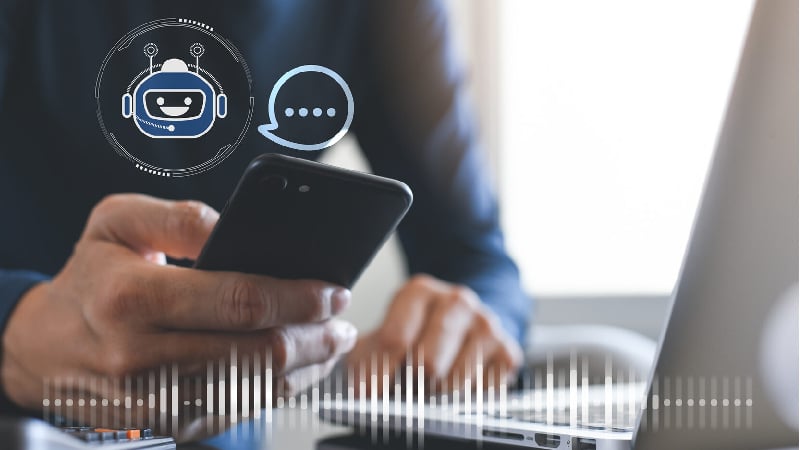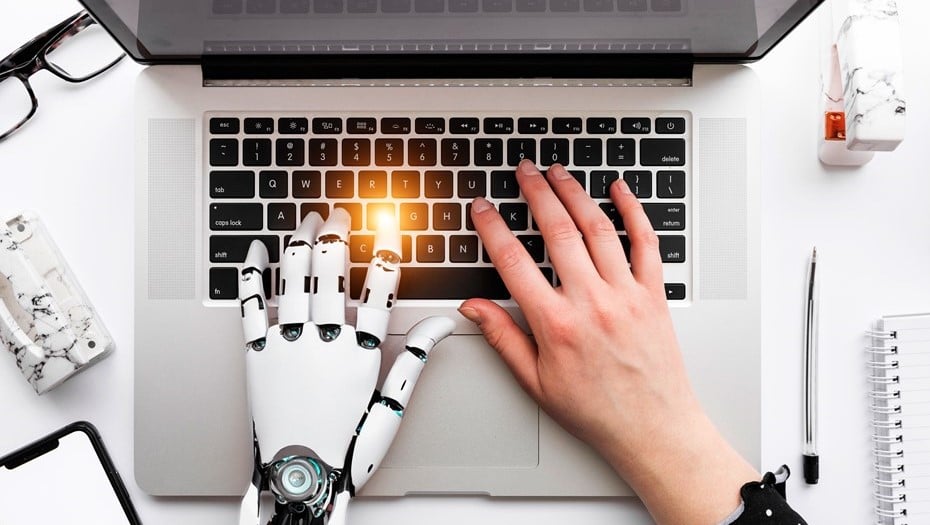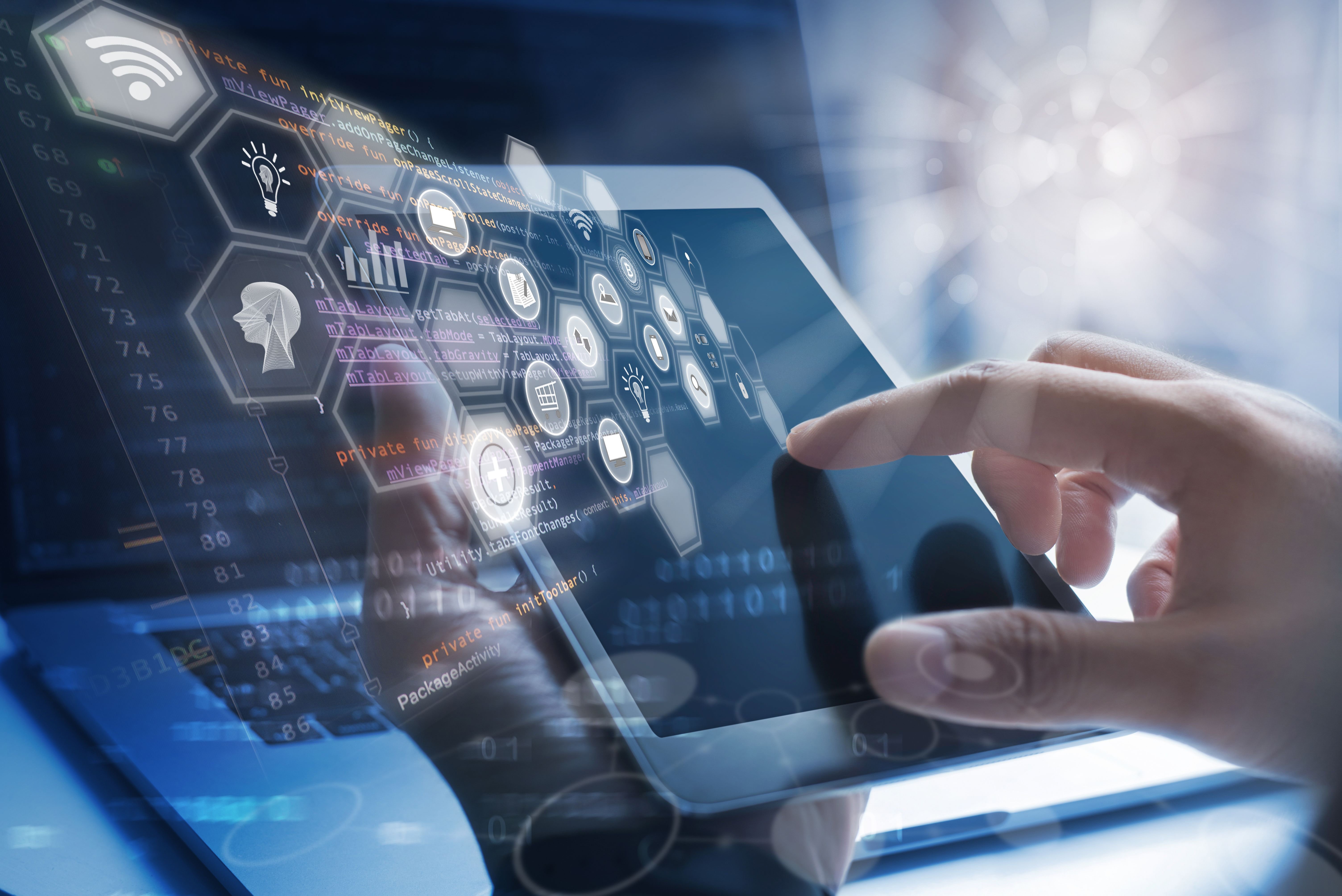The Ultimate AI Marketing Automation Guide for 2024 - Part I

Artificial Intelligence (AI) has been a buzzword for a long time, but its true potential has only recently been realized in marketing automation. AI-powered marketing automation has revolutionized how companies interact with their clients, allowing marketers to deliver personalized experiences at scale.
With the launch of Microsoft-powered ChatGPT and Bard's catastrophic error that cost Alphabet Inc. $100 billion in market value, AI and automation have advanced significantly in recent years. Recently, Google and Microsoft both announced plans to use AI to improve search, signaling a new phase in the AI race.
Fundamentally, AI marketing automation involves using AI and machine learning algorithms to automate and optimize marketing activities. This technology can potentially revolutionize how we approach marketing, making it more efficient, personalized, and ultimately more effective.
AI and automation have already become part of people's daily lives. If you've ever communicated with a chatbot, asked a virtual assistant to help you shop online, or asked Alexa for information, you've benefited from both technologies.
Due to the ongoing advancements in automation and AI, new data-driven business areas are expanding. The AI market has also seen tremendous growth, reaching $164.99 billion in 2023, compared to $136.6 billion in 2022.
Many people use marketing automation tools to help manage tasks such as email campaigns, social media posting, and lead generation. However, AI-driven automation differs from traditional automation in several key aspects.
So, this article will explore how AI can impact automation within your marketing department.

AI and Automation: Definitions and Differences
Artificial Intelligence (AI) and automation are often used interchangeably, leading to some confusion between the two terms. It’s crucial to understand each technology definition and the differences between them, especially when choosing the most suitable option to meet your needs.
AI encompasses using machines to simulate human intelligence to perform tasks that typically require human capabilities, such as visual perception, speech recognition, and language translation. AI technology relies on algorithms, deep learning, and neural networks to analyze, interpret, and learn from data, enabling it to perform tasks without human intervention.
On the other hand, automation involves using machines and software to automate tasks that typically require human involvement. Automation technologies can include robotics, computer software, and AI. Automation's primary goal is to increase efficiency, reduce errors, and enhance productivity.
AI and automation are distinct technologies. Automated machines are limited to following a predefined set of instructions; they cannot perform any actions that are not specified in the instructions. Conversely, AI can choose its strategy for success by using broad guidelines established by humans. In other words, AI requires processing vast amounts of data and training to augment human intelligence, while automation uses technology to replace human intervention.
While automation may or may not use AI to complete tasks, automation is a built-in feature of AI technology. AI can complement automation in several ways. For example, automation can transfer data from one point to another, while AI can interpret that data and respond accordingly. AI offers many businesses a great way to increase the functionality of the automation tools they use.
Furthermore, AI can learn from experience and improve its performance over time without human intervention. AI enables computer systems to simulate human intelligence and reasoning, allowing the system to learn, predict, and recommend what should be done next. The capabilities enabled by AI include natural language processing, computer vision, and facial recognition. These capabilities are supported by machine learning and deep learning through neural networks.
AI uses a set of algorithms to find patterns amidst data noise and to discover solutions that humans may not be able to process. Most AI systems using machine learning today only assist. They offer recommendations for the best next actions humans can accept or reject. Then, adjustments are made manually.

AI and Automation Rise: Redefining the Workforce
AI and automation are already revolutionizing business operations and their impact is expected to expand in the coming years. These cutting-edge technologies allow employees to concentrate on more complex work and offer quick and accurate ways to complete tasks.
AI and automation are improving processes and giving businesses useful insights and recommendations in traditional industries like manufacturing and finance. For example, AI-powered robots take on repetitive tasks in manufacturing, while AI systems analyze vast amounts of data to help finance companies make informed decisions.
These technologies will impact more than just traditional industries; they will lead to the rise of new data-driven sectors such as healthcare and retail. In healthcare, AI systems can assist in diagnosing medical issues and creating personalized treatment plans. Meanwhile, AI technologies in retail can create personalized shopping experiences and predict new consumer trends.
AI and automation will shape business' future. As these technologies develop further, they will enable people to do previously unimaginable things, helping the workforce create new value in ways that were not possible before. However, their widespread adoption will also pose complex new challenges, making it essential to carefully consider their impact and plan accordingly.
Jobs Lost, Gained, and Changed Due to AI and Automation
The current industrial revolution involves the adoption of automation and AI. This could significantly increase productivity and replace 50% of work activities by 2055. In 2022, there were over 4 million industrial robots worldwide. While automation can improve efficiency, it also raises concerns about job loss.
Work activities can be automated, including physical tasks in organized environments and data processing, using current technology. Jobs in food preparation, construction, cleaning, and driving are particularly at risk. Also, the pandemic significantly shifted the adoption of AI and automation, as online meeting platforms like Zoom and Microsoft Teams gained popularity due to remote work and learning.
Jobs Lost
Based on recent data, up to 20 million jobs in the U.S. manufacturing sector may be lost due to automation by 2030, with 25% of all U.S. jobs experiencing high levels of disruption due to automation. Approximately 36 million jobs are at high risk due to automation, while 52 million jobs are at medium risk. Although 57 million jobs are classified as low-risk, nearly every job will be affected by automation in some way.
Obtaining a college degree may protect employees from job loss by at least 21%. Estimates show that around 50% of the work done by those without a college degree could be automated using current technology. However, obtaining a degree reduces this figure by 29%.
Jobs Gained
While automation may lead to losing some jobs, it can also create new ones. Workers operating machines more efficiently can reduce operating costs and product prices. This can attract more consumers to spend more money, subsequently increasing demand for new jobs.
The shift to automation is expected to generate 133 million new jobs. Although some industries will lose jobs, others, such as healthcare, education, and technical services, will benefit from automation. In the UK, AI is expected to replace about seven million jobs but will create approximately 7.2 million new jobs between 2017 and 2037.
Changing Jobs
Despite many workers' concerns about automation threatening their jobs, some remain optimistic. In a survey of 7,000 workers, 70% expressed hope that automation would provide them with opportunities to qualify for jobs requiring higher skills. People who receive more education and training can learn to perform new tasks and work better with machines. For example, while robots have replaced unskilled workers in factories, they have also created new jobs for technicians who operate and maintain the machines.
_ILLAFTrain_5dfc7fc1b9753f00b82747b59f969c0655182484_6f053ff79f32b5f17b53c4643e3cab41.jpg)
Understanding AI in Marketing Automation
AI's simplest definition is that it is a computer program designed to learn from data and adapt its behavior accordingly. In the context of marketing automation, this means that AI can analyze vast amounts of data to identify patterns, predict customer behavior, and make real-time decisions.
AI-powered marketing automation has numerous benefits. By leveraging AI, marketers can gain valuable insights into their audience's behaviors and preferences, allowing them to create more personalized campaigns specifically designed to meet each customer's needs. This could lead to higher engagement rates, increased customer satisfaction, and, ultimately, better business outcomes.
A recent study by Influencer Marketing Hub regarding AI in marketing concluded the following results:
- The primary reason (41.7%) for not adopting AI in marketing is the lack of understanding or familiarity with it, while content production (44%) is the most common form of AI adoption.
- Most participants in the study (71.1%) believe that AI can outperform humans in their jobs, but human marketers envision continuing to be responsible for tasks such as high-level strategy and decision-making (41.4%) and creativity and emotional appeal (23%).
- More than half of the participants (55%) expressed optimism that AI will significantly enhance marketing efforts, and less than 10% of the marketing budget was spent on AI-driven campaigns in 2022.
- A significant portion of participants (35.5%) fear that AI may jeopardize their job positions, and 19% of participants spent over 40% of their marketing budget on AI-driven campaigns in 2022.
Why Should Marketers Use AI-Powered Marketing Automation?
To illustrate AI's potential benefits in marketing, here are some examples and statistics:
1. Personalization
According to an Epsilon survey, 80% of customers are more likely to engage with a company if it offers a personalized experience. AI can help marketers achieve this personalization level at scale by analyzing customer data and providing customized recommendations. For example, Netflix uses AI algorithms to recommend content to its users based on their viewing history, leading to higher engagement and retention rates.
2. Cost-Effectiveness
AI can help marketers save time and money by automating repetitive tasks. For example, AI-powered chatbots can handle customer inquiries and provide support 24/7, reducing the need for human customer service agents. This can lead to significant cost savings over time. Additionally, AI can help optimize advertising spending by identifying the most effective channels and campaigns, reducing waste.
3. Improved ROI - Return on Investment
According to an Accenture study, companies that implement AI in marketing see an average increase in return on investment (ROI) of up to 30%. This is because AI can help marketers identify new growth opportunities, optimize ad spending, and enhance customer engagement.
4. Predictive Analytics
AI can provide predictive insights that help marketers anticipate customer needs and preferences by analyzing customer data and behavior. For example, Amazon uses AI to provide product recommendations to its customers based on their purchase history and browsing behavior. This personalization level can increase customer satisfaction and higher sales.
In summary, using AI in marketing can yield numerous benefits, including increased efficiency, cost savings, and enhanced customer engagement. Therefore, marketers who do not leverage AI risk falling behind their competitors and missing out on these advantages.
In Conclusion
In this part, we discussed the difference between automation and AI, their impact on jobs, and the AI-powered marketing automation importance. In the next part, we will discuss AI applications in marketing automation and implementation steps and answer some frequently asked questions.